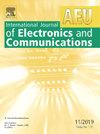基于FinFET的单位线反馈切割低功耗11T SRAM单元,用于LPWAN应用
IF 3
3区 计算机科学
Q2 ENGINEERING, ELECTRICAL & ELECTRONIC
Aeu-International Journal of Electronics and Communications
Pub Date : 2025-05-07
DOI:10.1016/j.aeue.2025.155821
引用次数: 0
摘要
这项工作提出了一种先进的SRAM位单元的设计,优化了LPWAN应用,利用FinFET 18nm技术。将所提出的FCLP11T单元与传统6T (CO6T)、基于传输门的反馈切割9T (TGFC9T)、基于传输门的读缓冲10T (TGRB10T)、基于双pmos的读解耦10T (DPRD10T)和双堆栈10T (DS10T)进行了比较。与CO6T/TGRB10T/TGFC9T/DS10T/DPRD10T SRAM位单元设计相比,其读写功耗分别显著降低了1.02×/1.91×/1.75×/1×/1.97×和1.54×/1.90×/1.09×/2.29×/1.10×。此外,与CO6T/TGRB10T /TGFC9T/DS10T /DPRD10T SRAM位单元设计相比,FCLP11T单元的漏功率分别降低了1.29×/1.15×/1.30×/1.17×/ 1.12×, WSNM分别提高了1.39×/1.55×/0.99×/1.38×/1.31×。与CO6T/TGRB10T /TGFC9T/DS10T/DPRD10T SRAM位单元设计相比,RSNM和HSNM分别提高了2.12×/ 1.44×/ 1.55×/1.73×/1.01×和1.03×/1.02×/1.03×/1.02×/ 1.01×。该电池已经过工艺电压-温度变化测试,突出了其强大的性能和对LPWAN应用的适用性。本文章由计算机程序翻译,如有差异,请以英文原文为准。
A FinFET based single bit-line feedback cutting Low Power 11T SRAM cell for LPWAN applications
This work presents the design of an advanced SRAM bit-cell optimized for LPWAN applications, leveraging FinFET 18 nm technology. The proposed FCLP11T cell is compared with Conventional 6T (CO6T), Transmission gate-based feedback-cutting 9T (TGFC9T), Transmission gate-based read buffers 10T (TGRB10T), Dual PMOS-based read decoupled 10T (DPRD10T), and Dual Stack 10T (DS10T). It demonstrates significant reductions in read and write power dissipation by factors of 1.02/1.91/1.75/1/1.97 and 1.54/1.90/1.09/2.29/1.10, respectively, compared to CO6T/TGRB10T/TGFC9T/DS10T/DPRD10T SRAM bit-cell design. Additionally, the FCLP11T cell reduces leakage power by 1.29/1.15/1.30/1.17/ 1.12 and improves WSNM by 1.39/1.55/0.99/1.38/1.31, respectively, compared to CO6T/TGRB10T /TGFC9T/DS10T /DPRD10T SRAM bit-cell design. The RSNM and HSNM are also enhanced by 2.12/ 1.44/ 1.55/1.73/1.01 and 1.03/1.02/1.03/1.02/ 1.01, respectively, compared to CO6T/TGRB10T /TGFC9T/DS10T/DPRD10T SRAM bit-cell design. . The proposed cell has been tested for Process-Voltage-Temperature variations, highlighting its robust performance and suitability for LPWAN applications.
求助全文
通过发布文献求助,成功后即可免费获取论文全文。
去求助
来源期刊
CiteScore
6.90
自引率
18.80%
发文量
292
审稿时长
4.9 months
期刊介绍:
AEÜ is an international scientific journal which publishes both original works and invited tutorials. The journal''s scope covers all aspects of theory and design of circuits, systems and devices for electronics, signal processing, and communication, including:
signal and system theory, digital signal processing
network theory and circuit design
information theory, communication theory and techniques, modulation, source and channel coding
switching theory and techniques, communication protocols
optical communications
microwave theory and techniques, radar, sonar
antennas, wave propagation
AEÜ publishes full papers and letters with very short turn around time but a high standard review process. Review cycles are typically finished within twelve weeks by application of modern electronic communication facilities.

 求助内容:
求助内容: 应助结果提醒方式:
应助结果提醒方式:


